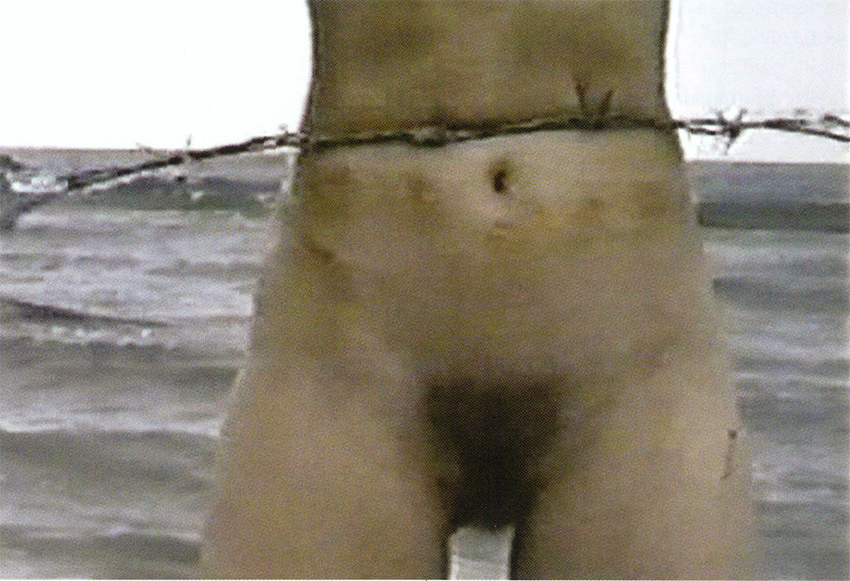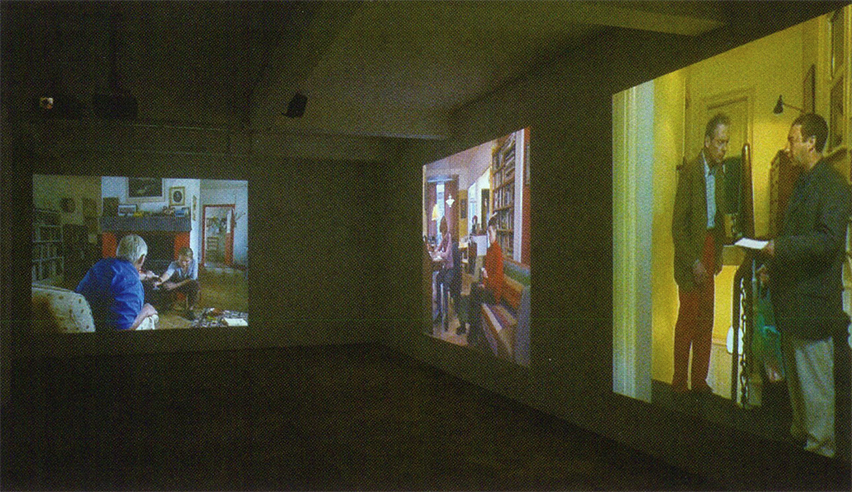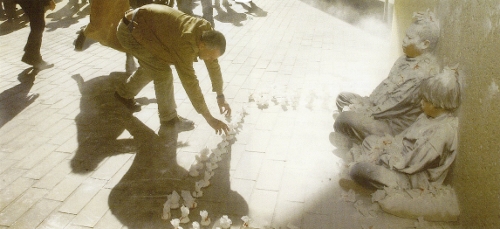
Directed by Robyn Archer, the Melbourne International Arts Festival cast an irresistible pulse over Melbourne with audiences flocking to samba and sway at Federation Square or swirling with the ecstatic Whirling Dervishes. With no Bach in sight, her focused program included a visual arts component comprising six exhibitions and three public art projects. For Archer, the program is '&a celebration of the body in all shapes and shades. When the world feels uncertain, when fear makes some forget their humanity, art is the very best place for us to gather together in awe of the beauty and skill that bodies (and their brains) produce.'
Archer's highly successful body/dance theme was taken up by Juliana Engberg for the visual arts program with a spicy mix. Accompanied by an international lecture and dedicated publication, the visual arts program provided a welcome coherence with the overarching theme uniting various artforms. It is refreshing that the visual arts, despite its lack of box office revenue, featured prominently in the program. Rather than merely a series of cross-listed exhibitions, the visual arts component was curated over the past few years. Moreover, a specially curated film program adds to seventeen days and nights of sashaying across Melbourne.
The main exhibition at ACCA was Orifice: a dazzling, enticing and sometimes brutal display of salacious works ranging from performance, video, sculpture and painting to installation. A significant curatorial endeavor, Orifice continues an important enterprise of contextualizing Australian artists with their contemporaries abroad. To this end, it would have been helpful if wall labels had indicated the artists' place of origin and work. At times lewd and sexy, the visitor was teased at the entrance by the earliest work in the exhibition: the Marina Abramovic & Ulay performance Breathing In/Breathing Out from 1977. Continuously smooching, the couple beckons the visitor with an everlasting kiss.
ACCA was tantalisingly installed with its large architectural volume carefully configured with works that poke, lick and suck. Some literal inclusions by David Wishart and John Meade featuring circular and concentric configurations that play on the orifice/hole theme are contrasted with one of the exhibition highlights - Israeli artist Sigalit Landau's Barbed Hula. Elevated and projected on the back wall, her video depicts Landau's slowly gyrated torso swaying to the rhythms of a hula hoop made of barbed wire. Making masochistic incisions in her flesh, the work is both shocking and riveting. The associative range of her performance includes Palestinian Israeli segregation, barbed wire surrounding concentration camps, prisons and incarceration, barriers and borders. Less clear were Matthys Gerber's hyperreal landscapes although Engberg's catalogue essay exuberantly describes gushing waterfalls as emblematic of feminine excess! Brent Harris' bulging and pendulous paintings of abstracted body parts suggest a body in flux while Mariele Neudecker's twin holes drew us in to their mysterious landscape.
Perhaps the visual arts were most successful when integrated with the performing arts particularly in the commissioned collaborative work Plasticine Park. Choreographer Lucy Guerin worked closely with artists Stephen Honegger, Laresa Kosloff, Patricia Piccinini and David Rosetzky to produce seven solo performances at ACMI Screen Gallery in Federation Square. The depth and cavernous aspects of ACMI are utilized successfully with a series of suspended screens. This unique collaborative opportunity explores the space between body and screen. David Rosetzky's video portraits of couples are highly stylized renditions that might have been lifted from Wallpaper magazine. A young fashionable woman appears on the screen amidst a shag pile groove. Here private encounters reveal the agonies and disappointments of relationships, where internal communication replaces actual conversations.
UK artist Gary Stevens Slow Life at Conical Gallery was a five-part video projection of everyday encounters. Poetic and hypnotic, Stevens renders the ordinary extraordinary. Referencing the still life genre and filmed in real time, Stevens' deliberately slows down these scenes with highly controlled movement depicting the minutiae of familiar scenarios. Scripted encounters include peeling a carrot at the kitchen table, walking upstairs, sitting before a fire-place: everyday incidences that are presented so painstakingly slowly that their gestures take on new meaning.

Video projections also appear in UK artist Anna Lucas' Trevety at Anna Schwartz Gallery. Here are chance encounters between strangers whose paths cross briefly. Originally premiered at Spike Island, Bristol, the lilting pace of Trevety might have had more contextual resonance in its place of origin. While achingly beautiful, there are inherent problems in re-siting works made for particular contexts.
Preoccupations with minutiae, everyday encounters and relationships are also taken up by Japanese mixed-media artists collective Dumb Type. In the program notes, Memorandum is '...a non-elegy to recall, an impossible investigation into the unstable neuro-philosophical events of memory itself.' Cast members scramble up a rock-climbing wall with a video projected onto a backdrop while a hip-swaying dance recurs as strangely detached and sensuous. Confronting, arresting images combined with humorous gestures, Memorandum says more about our contemporary existence and the way in which memory is stored, retrieved and apprehended. Based in Kyoto, Dumb Type presents a visual assault while evoking complex notions of the randomness of thoughts, remembering and forgetting.
Ultimately I prefer the sexy vibe of Orifice and the frenetic searching without a destination of Dumb Type. Overall this year's festival was a feast of fun and flesh. Let's hope it continues.












